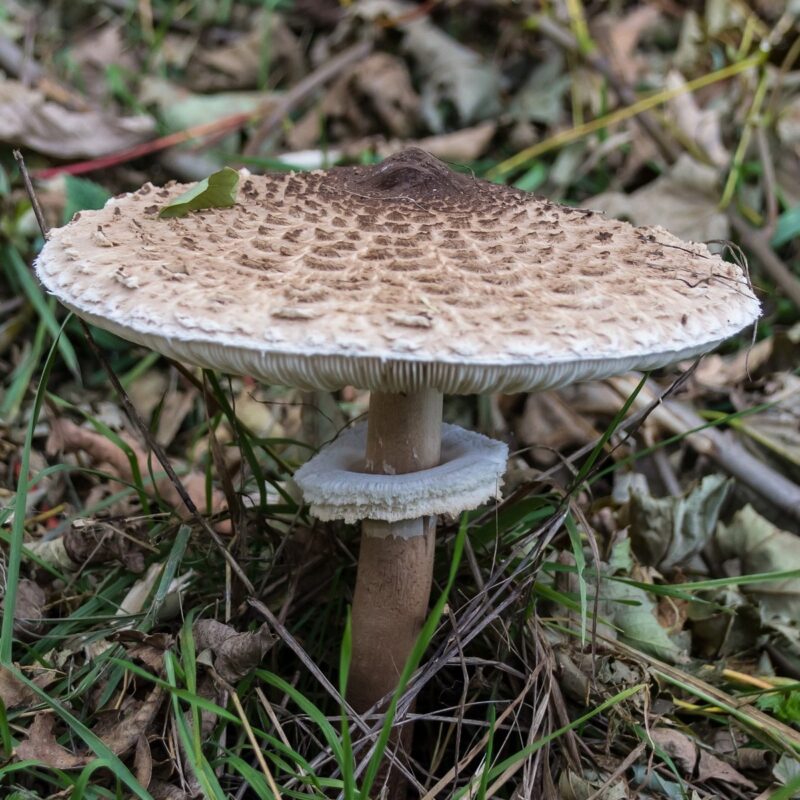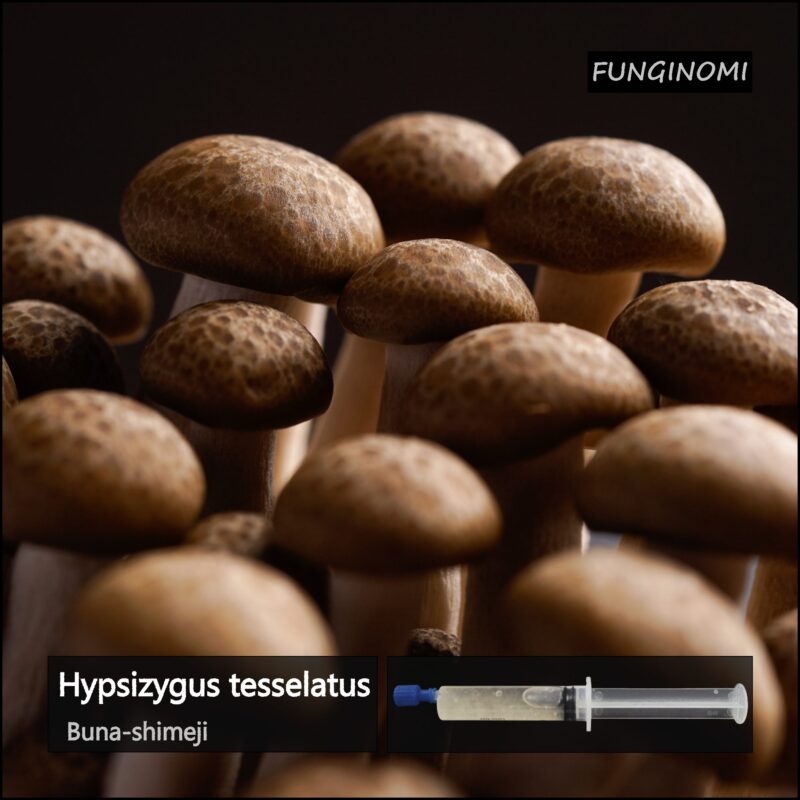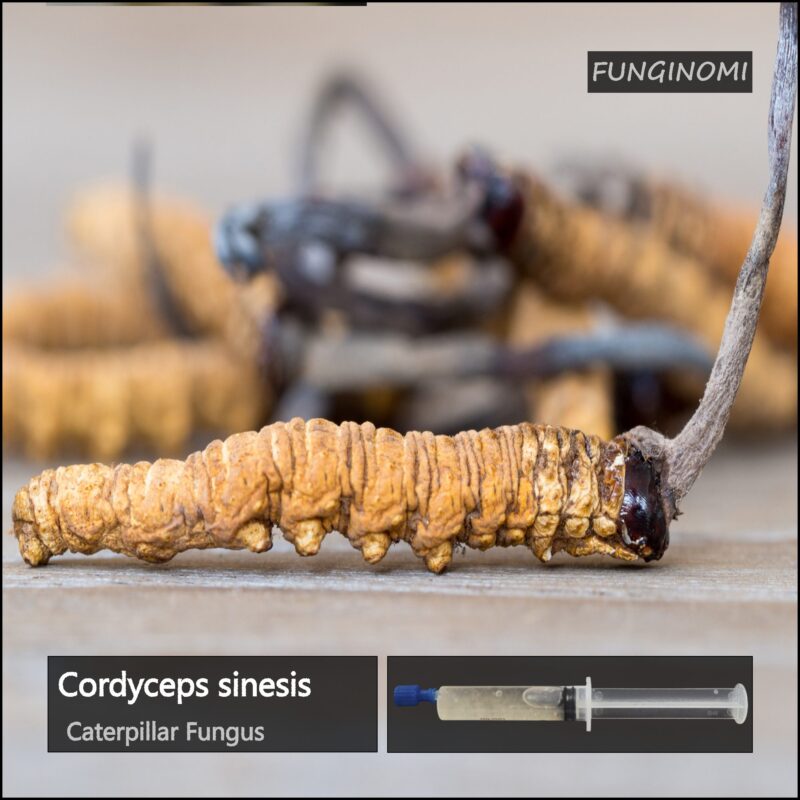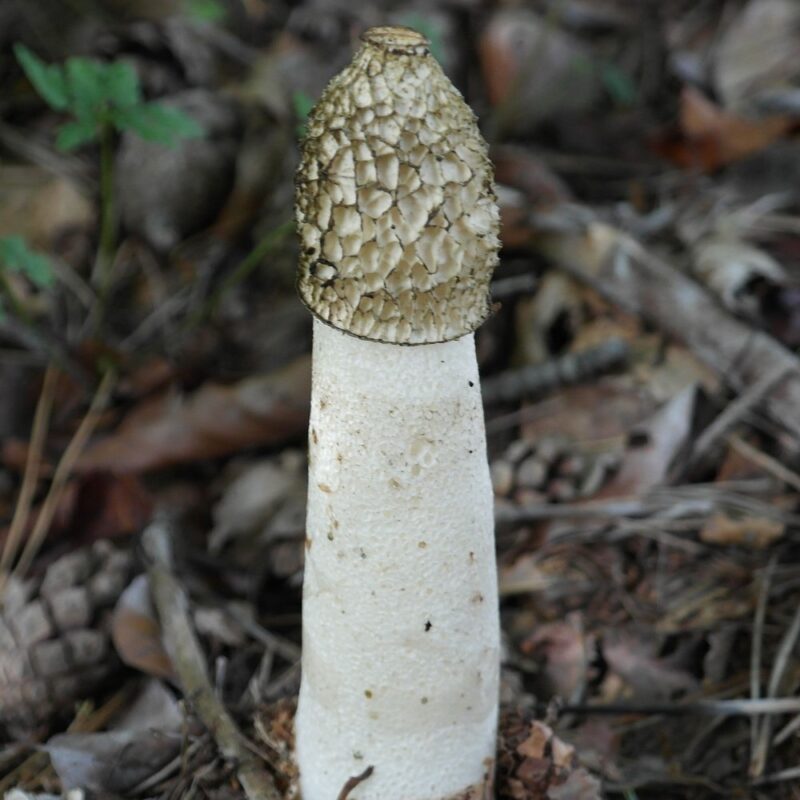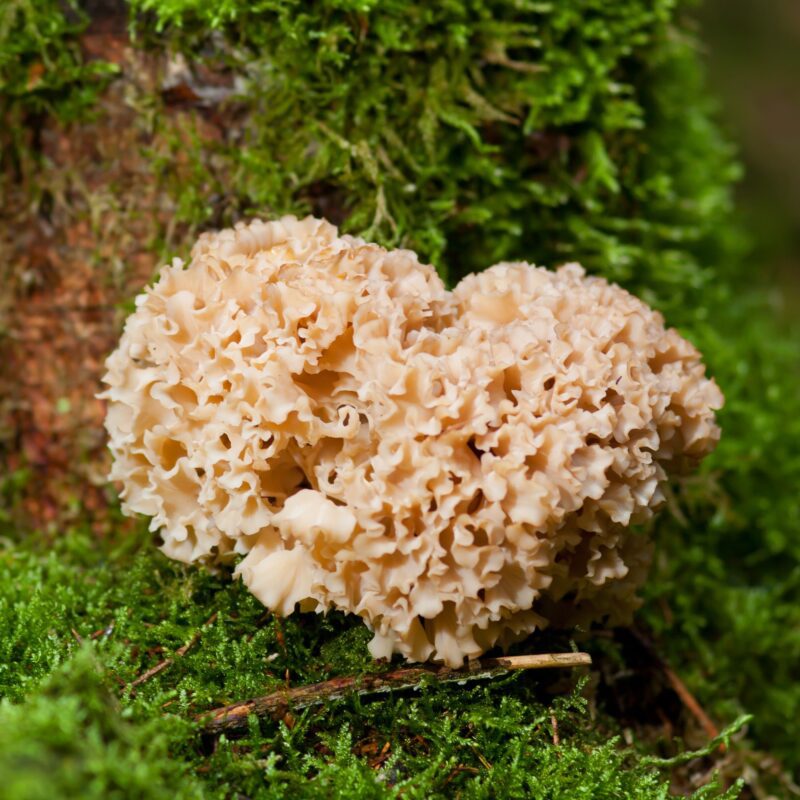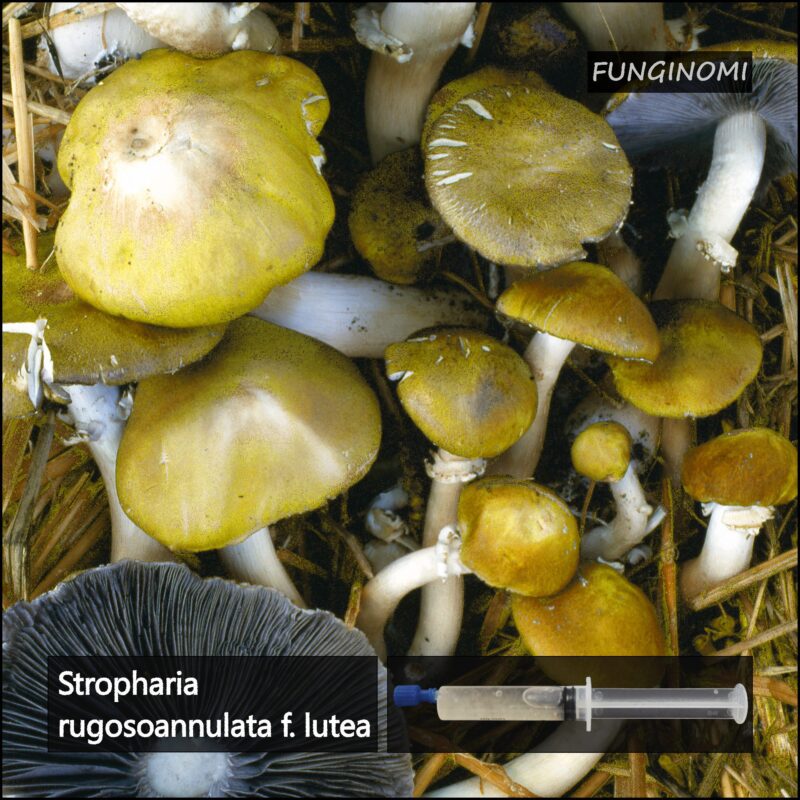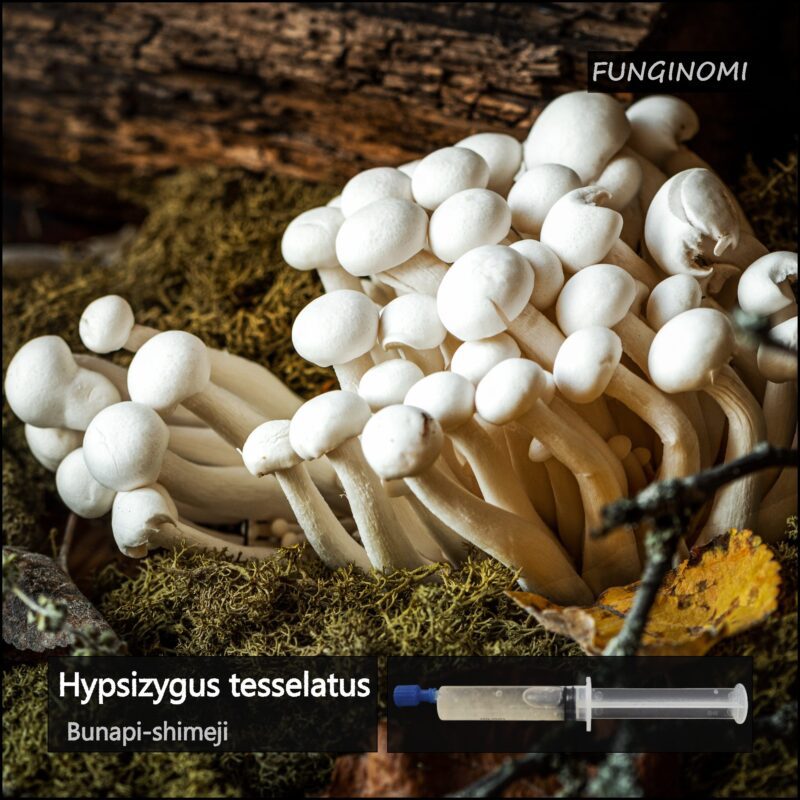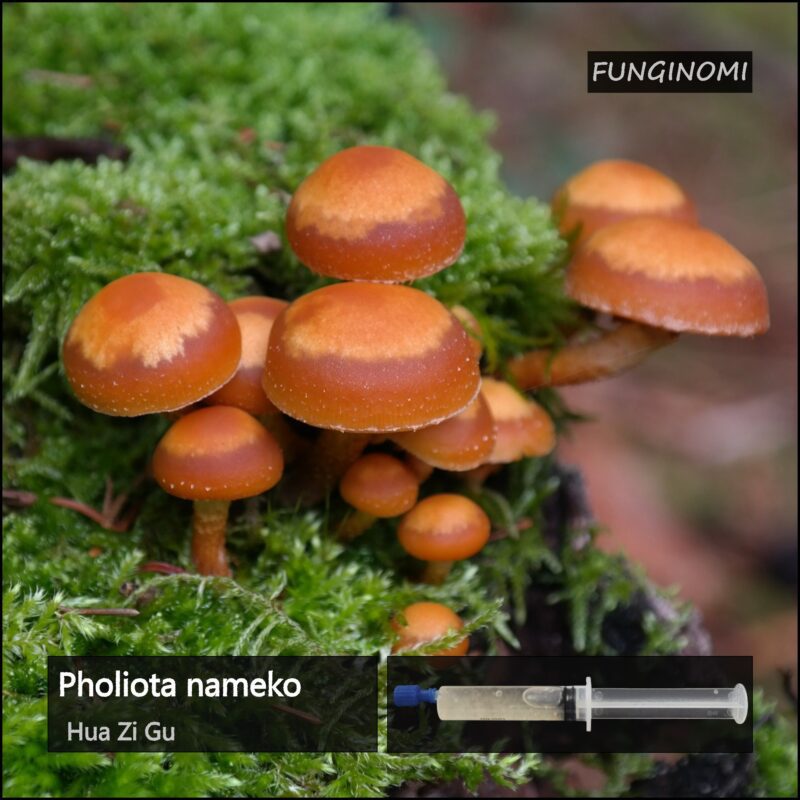A Comprehensive Guide to Mushroom Gourmet Active Ingredients – Unleashing the Flavors and Benefits
Introduction to Mushroom Gourmet Active Ingredients

Gourmet active ingredients and their significance in culinary creations.
Mushroom gourmet active ingredients are nature’s culinary treasures, adding a burst of flavor and a touch of magic to your dishes. These unique ingredients are derived from various species of mushrooms and are renowned for their distinctive taste profiles and health benefits. By incorporating mushroom gourmet active ingredients into your cooking, you can elevate your culinary creations to new heights. Let’s delve into the world of these remarkable ingredients and discover how they can unleash flavors and enhance the nutritional value of your dishes.
Exploring Popular Mushroom Gourmet Active Ingredients
Mushroom gourmet active ingredients have gained significant recognition for their medicinal properties, making them a valuable addition to culinary creations. Let’s explore some popular mushroom gourmet active ingredients known for their health benefits:
-
Beta-Glucans: These bioactive compounds found in mushrooms, such as Reishi and Shiitake, have immune-boosting properties. Beta-glucans stimulate the production of white blood cells, enhancing the body’s defense against infections and diseases.
-
Ergosterol: Mushrooms like Maitake and Chanterelle contain ergosterol, a precursor to vitamin D. This compound supports bone health, aids in calcium absorption, and contributes to overall immune system function.
-
Polysaccharides: Medicinal mushrooms like Turkey Tail and Lion’s Mane contain polysaccharides that have potential anti-cancer and anti-inflammatory effects. These compounds support cellular health and promote overall well-being.
-
Triterpenoids: Reishi mushrooms are rich in triterpenoids, known for their antioxidant and anti-inflammatory properties. These active ingredients may help reduce stress, support liver health, and promote longevity.
-
Hericenones and Erinacines: Lion’s Mane mushrooms contain hericenones and erinacines, compounds that have shown promising effects on cognitive function and nerve regeneration. They may support brain health, memory, and focus.
-
Antioxidants: Various mushrooms, including Porcini and Shiitake, are packed with antioxidants that help combat oxidative stress and reduce inflammation in the body. Antioxidants contribute to overall wellness and may protect against chronic diseases.
Incorporating these mushroom gourmet active ingredients into your cooking can provide not only delightful flavors but also a natural boost to your health. Remember to consult with a healthcare professional before using mushrooms medicinally, especially if you have any underlying health conditions or are taking medications.
Nutritional and health benefits associated with mushroom consumption
Mushrooms are not only a culinary delight but also a powerhouse of nutrition, offering an array of health benefits. Let’s delve into the remarkable nutritional profile and health-promoting properties associated with mushroom consumption:
-
Low in Calories and Fat: Mushrooms are low in calories and fat, making them a great addition to a balanced diet. They provide satisfying and flavorful options for those watching their calorie intake.
-
Rich in Vitamins and Minerals: Mushrooms are a natural source of essential vitamins and minerals. They are particularly high in B-vitamins like riboflavin, niacin, and pantothenic acid, which are crucial for energy production, metabolism, and healthy skin.
-
High in Dietary Fiber: Fiber plays a vital role in digestive health and can contribute to a feeling of fullness. Mushrooms contain dietary fiber, aiding in healthy digestion and potentially supporting weight management.
-
Immune-Boosting Properties: Certain mushroom varieties, such as Shiitake and Reishi, contain compounds like beta-glucans that have immune-boosting properties. Regular consumption of these mushrooms may help enhance immune function and promote overall wellness.
-
Antioxidant Power: Mushrooms are rich in antioxidants, including selenium, vitamin C, and various phenolic compounds. These antioxidants help protect cells from damage caused by free radicals, potentially reducing the risk of chronic diseases.
-
Potential Anti-Inflammatory Effects: Some mushrooms, such as Cordyceps and Turkey Tail, exhibit anti-inflammatory properties. Consuming these mushrooms may help reduce inflammation in the body, which is associated with various health conditions.
-
Adaptogenic Properties: Certain mushrooms, including Reishi and Lion’s Mane, are considered adaptogens, which means they may help the body adapt to stress and promote overall well-being.
-
Possible Cognitive Benefits: Lion’s Mane mushrooms have gained attention for their potential cognitive benefits. These mushrooms contain compounds like hericenones and erinacines, which may support brain health, memory, and focus.
Incorporating mushrooms into your diet can be a flavorful way to boost your nutritional intake and support your overall health. Whether enjoyed sautéed, grilled, in soups, or as a meat substitute, mushrooms offer a versatile and nutritious addition to a well-rounded eating plan.
Understanding Mushroom Gourmet Active Ingredients
The Concept of Active Ingredients in Mushrooms: Taste, Aroma, and Health Benefits
Mushrooms are not only valued for their unique flavors and textures but also for their active ingredients, which contribute to their taste, aroma, and health benefits. Let’s explore the concept of active ingredients in mushrooms and their impact:
-
Taste and Aroma: Active ingredients in mushrooms play a crucial role in enhancing their taste and aroma. Mushrooms contain various compounds, such as glutamates and nucleotides, that contribute to the umami flavor—a savory, rich taste that adds depth and complexity to dishes. These compounds stimulate taste receptors and enhance the overall sensory experience of consuming mushrooms.
-
Medicinal Properties: Many mushrooms possess active ingredients that offer notable health benefits. For instance, compounds like beta-glucans, found in species like Reishi and Shiitake, have immune-boosting properties and may support overall immune system function. Triterpenoids, present in Reishi mushrooms, exhibit antioxidant and anti-inflammatory effects, potentially promoting wellness and longevity. Polysaccharides found in certain medicinal mushrooms, such as Turkey Tail and Lion’s Mane, have shown potential anti-cancer and anti-inflammatory properties, contributing to overall health.
-
Aromatics and Volatile Compounds: Active ingredients in mushrooms also contribute to their distinctive aromas. Volatile compounds, such as 1-octen-3-one, are responsible for the earthy, nutty, or fruity fragrance that mushrooms emit. These aromatic compounds not only add depth to dishes but also enhance the overall sensory experience of cooking and eating mushrooms.
-
Nutritional Composition: Active ingredients in mushrooms contribute to their nutritional value. Mushrooms are a low-calorie food source and contain essential vitamins, including B-vitamins such as riboflavin, niacin, and pantothenic acid, which are crucial for energy metabolism. Additionally, mushrooms are rich in dietary fiber, providing digestive benefits and promoting feelings of satiety.
By understanding the active ingredients in mushrooms, we can appreciate their impact on taste, aroma, and health benefits. Incorporating a variety of mushrooms into our culinary endeavors allows us to explore different flavors, enjoy their enticing aromas, and potentially reap the nutritional and medicinal advantages they offer.
Chemical Compounds Responsible for the Unique Flavors and Characteristics of Gourmet Mushrooms
The unique flavors and characteristics of gourmet mushrooms are attributed to a variety of chemical compounds present within them. Let’s explore some of these compounds and their contributions to the delightful flavors and qualities found in gourmet mushrooms:
-
Glutamates: Glutamates are amino acids responsible for the umami taste, often described as savory or meaty. Gourmet mushrooms, such as Porcini and Shiitake, contain high levels of glutamic acid and its salt form, monosodium glutamate (MSG). These compounds enhance the overall taste profile, making mushrooms a popular ingredient in enhancing the umami flavor of various dishes.
-
Nucleotides: Nucleotides, such as guanosine monophosphate (GMP) and inosine monophosphate (IMP), are compounds that contribute to the overall savory taste and aroma of mushrooms. They work synergistically with glutamates to enhance the umami flavor, providing a more complex and robust taste experience. Gourmet mushrooms like Porcini and Morel are known for their high nucleotide content.
-
Terpenes: Terpenes are aromatic compounds found in various plants, including mushrooms, and are responsible for their unique scents. These compounds contribute to the distinct earthy, woody, and fruity aromas associated with gourmet mushrooms. For example, the terpene compound known as 1-octen-3-one is responsible for the characteristic “mushroom” smell.
-
Thiols: Thiols are sulfur-containing compounds that contribute to the pungent aroma and flavors in some mushrooms. These compounds can provide an intense, sulfurous, or onion-like aroma and taste. Gourmet mushrooms like Truffles and more pungent varieties of wild mushrooms often contain higher levels of thiols.
-
Phenols: Phenolic compounds, including flavonoids and phenolic acids, are antioxidants found in mushrooms. These compounds contribute to the overall nutritional value and potential health benefits of gourmet mushrooms. They also provide a slightly bitter or astringent taste, adding depth and complexity to the overall flavor profile.
It is the combination and concentration of these chemical compounds that give gourmet mushrooms their unique flavors, aromas, and characteristics. Each mushroom variety has its own distinct composition of these compounds, resulting in a wide range of tastes and sensory experiences. Understanding these chemical components allows us to appreciate the complexity and culinary versatility of gourmet mushrooms.
Importance of Selecting Fresh and High-Quality Mushrooms for the Best Results
When it comes to cooking with mushrooms, selecting fresh and high-quality specimens is essential to achieve the best culinary results. Here are the key reasons why choosing fresh mushrooms is of utmost importance:
-
Optimal Flavor and Texture: Fresh mushrooms offer superior flavor and texture compared to those that are old or of lower quality. Fresh mushrooms have a vibrant, earthy taste and a firm, crisp texture, which enhances the overall quality of your dishes. They impart a delightful depth and aroma that can elevate your recipes to new heights.
-
Nutritional Value: Fresh mushrooms retain their nutritional value, providing essential vitamins, minerals, and antioxidants. As mushrooms age, their nutrient content may gradually decrease. By selecting fresh mushrooms, you ensure that you are incorporating the maximum nutritional benefits into your meals.
-
Enhanced Aroma: Fresh mushrooms have a distinct and enticing aroma that intensifies when cooked. This aromatic quality adds a wonderful fragrance to your dishes and enhances the overall sensory experience of your culinary creations.
-
Cooking Consistency: Fresh mushrooms have a consistent texture, allowing for more even cooking. Mushrooms that are past their prime may become slimy, mushy, or discolored, affecting the overall cooking process and the final outcome of your dishes.
-
Food Safety: Fresh and properly handled mushrooms are less likely to harbor harmful bacteria or spoilage organisms. It is crucial to ensure the mushrooms you select are free from any signs of decay, mold, or unusual odors to maintain food safety.
-
Culinary Versatility: High-quality mushrooms offer greater culinary versatility. Whether you’re sautéing, grilling, roasting, or incorporating them into various recipes, fresh mushrooms provide a wider range of options and possibilities in the kitchen.
To select the best mushrooms, look for those that are firm, plump, and free from blemishes or signs of deterioration. Avoid mushrooms that appear shriveled, slimy, or have a strong off-putting odor. It’s also beneficial to source mushrooms from reputable suppliers or local farmers’ markets for the freshest options.
By prioritizing the selection of fresh and high-quality mushrooms, you can ensure that your culinary endeavors are met with superior flavor, texture, and overall satisfaction.
Popular Mushroom Gourmet Active Ingredients
Overview of the most popular gourmet mushrooms used in gastronomy
Gourmet mushrooms have captured the attention of chefs and food enthusiasts for their unique flavors, textures, and culinary versatility. Let’s explore an overview of some of the most popular gourmet mushrooms used in gastronomy:
-
Porcini Mushrooms: Highly prized for their robust flavor and meaty texture, Porcini mushrooms are a favorite among chefs. Their earthy and nutty taste adds depth to dishes like risottos, pastas, sauces, and soups.
-
Morel Mushrooms: Morels are highly sought-after gourmet mushrooms known for their distinctive honeycomb-like appearance and rich, earthy flavor. They have a delicate texture and are often used in upscale recipes, including sauces, meat dishes, and vegetable sautés.
-
Chanterelle Mushrooms: With their vibrant golden color and fruity aroma, Chanterelle mushrooms bring a touch of elegance to culinary creations. They have a mild and slightly peppery flavor, making them perfect for risottos, creamy sauces, and seafood dishes.
-
Shiitake Mushrooms: Originating from Asia, Shiitake mushrooms are widely recognized for their meaty texture and rich, smoky flavor. They are commonly used in stir-fries, soups, broths, and vegetarian dishes, providing a umami-packed punch.
-
Maitake Mushrooms: Also known as “hen of the woods,” Maitake mushrooms have a distinct frilly appearance and a robust, earthy flavor. They work well in stir-fries, sautés, and soups, imparting a unique taste and adding a pleasant chewy texture to dishes.
-
Truffle Mushrooms: Truffles are highly prized and considered the epitome of luxury in gastronomy. They have an intense and earthy aroma, and their flavor is often described as nutty and musky. Truffles are typically shaved or grated over pasta, risottos, eggs, and other gourmet dishes, imparting their exquisite essence.
-
Enoki Mushrooms: Enoki mushrooms are delicate and slender with a mild, slightly fruity flavor. They have a crisp texture and are commonly used in Asian cuisine, adding a delicate touch to soups, salads, stir-fries, and hot pot dishes.
-
Oyster Mushrooms: Oyster mushrooms have a delicate, mild taste with a subtle hint of sweetness. They have a tender texture and are popular in both vegetarian and meat-based dishes. Oyster mushrooms work well in stir-fries, sauces, soups, and as a meat substitute.
These are just a few examples of the popular gourmet mushrooms that have become culinary darlings. Each mushroom variety brings its own unique flavor, texture, and aroma, allowing chefs to create exceptional dishes that tantalize the taste buds and elevate the dining experience.
Flavors and Aromas: Exploring Mushroom Gourmet Active Ingredients
Comprehensive breakdown of the flavors and aromas associated with different gourmet mushrooms
Gourmet mushrooms exhibit a wide range of flavors and aromas, each offering a unique culinary experience. Here is a comprehensive breakdown of the flavors and aromas associated with different gourmet mushrooms:
-
Porcini Mushrooms:
- Flavor: Rich, earthy, and nutty with hints of forest floor.
- Aroma: Strong and distinctive, reminiscent of the woods.
-
Morel Mushrooms:
- Flavor: Earthy, nutty, and slightly smoky with a hint of sweetness.
- Aroma: Intense and earthy, often described as a mix of woodsy, earth, and apricot.
-
Chanterelle Mushrooms:
- Flavor: Mild, fruity, and slightly peppery with a hint of apricot.
- Aroma: Pleasantly aromatic with a fruity and floral fragrance.
-
Shiitake Mushrooms:
- Flavor: Rich, savory, and smoky with a slightly meaty umami taste.
- Aroma: Woody, earthy, and reminiscent of dried mushrooms.
-
Maitake Mushrooms:
- Flavor: Earthy, robust, and slightly spicy with a hint of nuttiness.
- Aroma: Earthy, woody, and similar to the scent of the forest.
-
Truffle Mushrooms:
- Flavor: Intensely earthy, nutty, and musky with a unique umami taste.
- Aroma: Highly aromatic with a pungent and complex scent often described as earthy, garlicky, or even reminiscent of a certain muskiness.
-
Enoki Mushrooms:
- Flavor: Delicate, mildly sweet, and slightly fruity.
- Aroma: Mildly aromatic, sometimes described as faintly floral or slightly fruity.
-
Oyster Mushrooms:
- Flavor: Mild and slightly sweet with subtle hints of seafood.
- Aroma: Fresh and mild, often compared to the scent of anise or almond.
-
Lion’s Mane Mushrooms:
- Flavor: Mild and slightly sweet with a delicate seafood-like taste.
- Aroma: Fresh and clean, sometimes described as having a hint of seafood fragrance.
-
Portobello Mushrooms:
- Flavor: Meaty, robust, and slightly nutty with a rich umami taste.
- Aroma: Earthy, reminiscent of a damp forest floor.
It’s important to note that flavors and aromas can vary slightly depending on factors such as growing conditions, maturity, and cooking methods. Exploring the diverse flavors and aromas of gourmet mushrooms allows for culinary creativity and the opportunity to create a multitude of delicious dishes that highlight the unique characteristics of each mushroom variety.
Tasting notes, pairing suggestions, and culinary applications for each mushroom variety
-
Porcini Mushrooms:
- Tasting Notes: Rich, earthy, and nutty with a meaty texture.
- Pairing Suggestions: Pair with beef, game meats, pasta, risotto, herbs like thyme and rosemary, Parmesan cheese.
- Culinary Applications: Use in sauces, soups, stews, risottos, pasta dishes, stuffings, and as a topping for pizzas or bruschetta.
-
Morel Mushrooms:
- Tasting Notes: Earthy, nutty, and slightly smoky with a delicate texture.
- Pairing Suggestions: Pair with poultry, veal, cream-based sauces, garlic, shallots, white wine.
- Culinary Applications: Use in sauces, cream-based soups, pasta dishes, omelets, and as a topping for pizzas or quiches.
-
Chanterelle Mushrooms:
- Tasting Notes: Mild, fruity, and slightly peppery with a delicate texture.
- Pairing Suggestions: Pair with chicken, seafood, herbs like tarragon and thyme, white wine, cream.
- Culinary Applications: Use in sautés, sauces, pasta dishes, risottos, vegetable medleys, and in egg-based dishes like omelets or frittatas.
-
Shiitake Mushrooms:
- Tasting Notes: Rich, savory, and smoky with a meaty texture.
- Pairing Suggestions: Pair with beef, pork, stir-fries, soy sauce, ginger, garlic.
- Culinary Applications: Use in stir-fries, soups, broths, sauces, rice dishes, and as a filling for dumplings or spring rolls.
-
Maitake Mushrooms:
- Tasting Notes: Earthy, robust, and slightly spicy with a frilly texture.
- Pairing Suggestions: Pair with pork, poultry, soy sauce, ginger, garlic, sesame oil.
- Culinary Applications: Use in stir-fries, sautés, soups, stews, grain-based dishes, and as a meat substitute in vegetarian recipes.
-
Truffle Mushrooms:
- Tasting Notes: Intensely earthy, nutty, and musky with a unique umami flavor.
- Pairing Suggestions: Pair with pasta, risotto, eggs, butter, Parmesan cheese, balsamic glaze.
- Culinary Applications: Use shaved or grated over dishes like pasta, risotto, scrambled eggs, mashed potatoes, and in sauces or dressings to add a luxurious and aromatic touch.
-
Enoki Mushrooms:
- Tasting Notes: Delicate, mildly sweet, and slightly fruity with a crisp texture.
- Pairing Suggestions: Pair with seafood, light broths, soy sauce, lime, sesame seeds.
- Culinary Applications: Use in soups, hot pots, stir-fries, salads, sushi rolls, and as a garnish for dishes.
-
Oyster Mushrooms:
- Tasting Notes: Mild and slightly sweet with a tender texture.
- Pairing Suggestions: Pair with chicken, seafood, garlic, lemon, herbs like thyme and parsley.
- Culinary Applications: Use in stir-fries, sautés, soups, stews, pasta dishes, and as a meat substitute in vegetarian recipes.
-
Lion’s Mane Mushrooms:
- Tasting Notes: Mild and slightly sweet with a delicate seafood-like taste.
- Pairing Suggestions: Pair with seafood, butter, lemon, herbs like dill and chives.
- Culinary Applications: Use in stir-fries, sautés, soups, seafood dishes, and as a meat substitute in vegetarian recipes.
-
Portobello Mushrooms:
- Tasting Notes: Meaty, robust, and slightly nutty with a rich umami flavor.
- Pairing Suggestions: Pair with beef, cheese, balsamic vinegar, herbs like thyme and rosemary.
- Culinary Applications: Use as a meat substitute in burgers, grilling, stuffing, roasting, and in pasta dishes or risottos.
These pairing suggestions and culinary applications provide a starting point to explore the versatility of each mushroom variety. Feel free to experiment and create your own unique recipes and combinations based on personal preferences and culinary creativity.
Health Benefits of Mushroom Gourmet Active Ingredients
Nutritional value and potential health benefits of consuming gourmet mushrooms
Gourmet mushrooms not only add depth and flavor to culinary creations but also offer a range of nutritional benefits. Here’s a discussion on the nutritional value and potential health benefits of consuming these versatile fungi:
-
Nutritional Value: Gourmet mushrooms are low in calories and fat, making them a nutritious addition to a balanced diet. While the nutrient composition may vary slightly among different mushroom varieties, they generally provide the following:
- Fiber: Mushrooms are a good source of dietary fiber, which supports digestive health and helps regulate blood sugar levels.
- Vitamins and Minerals: Gourmet mushrooms are rich in vitamins such as B vitamins (including niacin, riboflavin, and pantothenic acid), vitamin D, and minerals like potassium, copper, and selenium.
- Antioxidants: Mushrooms contain various antioxidants, including ergothioneine and selenium, which help protect cells from damage caused by free radicals.
-
Immune System Support: Gourmet mushrooms are known to possess immunomodulating properties, meaning they can support a healthy immune system. They contain compounds like beta-glucans, which stimulate immune cells and enhance the body’s defense against pathogens.
-
Potential Anti-Inflammatory Effects: Some gourmet mushrooms, such as Shiitake and Maitake, contain bioactive compounds that exhibit anti-inflammatory properties. These compounds may help reduce inflammation in the body and potentially contribute to the management of chronic inflammatory conditions.
-
Antioxidant Activity: Gourmet mushrooms are a natural source of antioxidants, which help combat oxidative stress and protect cells from damage caused by free radicals. Antioxidants play a role in overall health and have been associated with a reduced risk of chronic diseases.
-
Heart Health: Certain gourmet mushrooms, including Shiitake, have been studied for their potential cholesterol-lowering effects. They contain compounds like eritadenine, which may help reduce cholesterol levels and support heart health.
-
Digestive Health: The dietary fiber found in mushrooms can aid in maintaining a healthy digestive system by promoting regular bowel movements and supporting the growth of beneficial gut bacteria.
It’s important to note that while gourmet mushrooms offer potential health benefits, they should not be considered as a replacement for medical advice or treatment. Additionally, individual nutritional profiles and health benefits may vary among mushroom varieties, so it’s beneficial to include a variety of mushrooms in your diet.
Whether you enjoy them sautéed, roasted, in soups, or as a meat substitute, incorporating gourmet mushrooms into your meals can provide a range of nutrients and potential health benefits that contribute to a well-rounded and flavorful diet.
Presence of vitamins, minerals, antioxidants, and immune-boosting properties
Gourmet mushrooms are not only delectable additions to culinary creations but also offer a plethora of vitamins, minerals, antioxidants, and immune-boosting properties. Let’s explore the remarkable nutritional components found in these fungi:
-
Vitamins: Gourmet mushrooms are a rich source of various vitamins, including:
- B Vitamins: Mushrooms, such as shiitake and portobello, contain essential B vitamins like niacin (B3), riboflavin (B2), and pantothenic acid (B5), which play a vital role in energy production, brain function, and metabolism.
- Vitamin D: Certain mushrooms, when exposed to sunlight or ultraviolet (UV) light during growth, can produce vitamin D. This vitamin supports bone health, immune function, and overall well-being.
-
Minerals: Gourmet mushrooms offer an array of minerals that contribute to good health, including:
- Potassium: Mushrooms, like portobello, are a notable source of potassium, which is essential for maintaining proper heart function, regulating blood pressure, and supporting nerve function.
- Copper: Gourmet mushrooms contain copper, a mineral involved in energy production, collagen synthesis, and antioxidant defense systems in the body.
- Selenium: Selenium, found in mushrooms like shiitake, acts as an antioxidant and plays a crucial role in supporting the immune system and thyroid function.
-
Antioxidants: Gourmet mushrooms possess an impressive array of antioxidants, which help protect the body against oxidative stress and cellular damage. Noteworthy antioxidants found in mushrooms include:
- Ergothioneine: This unique antioxidant, exclusive to fungi, exhibits cellular-protective properties and has been linked to potential anti-aging effects.
- Selenium: Besides its mineral role, selenium acts as an antioxidant in the body, neutralizing harmful free radicals and supporting overall well-being.
- Polyphenols: Various gourmet mushrooms, such as porcini and maitake, contain polyphenols that possess antioxidant and anti-inflammatory properties, contributing to their potential health benefits.
-
Immune-Boosting Properties: Gourmet mushrooms are known for their immune-boosting properties, thanks to specific compounds they contain, such as:
- Beta-Glucans: These bioactive compounds found in mushrooms, including varieties like shiitake and maitake, have been shown to stimulate immune cells, enhance immune response, and potentially support overall immune system function.
- Polysaccharides: Mushrooms contain polysaccharides, including alpha-glucans and beta-glucans, which have been studied for their immunomodulatory effects, potentially strengthening the body’s defense against infections.
Including gourmet mushrooms in your diet allows you to harness the benefits of these valuable vitamins, minerals, antioxidants, and immune-boosting properties. Whether enjoyed sautéed, roasted, in soups, or as a flavorful ingredient in various dishes, gourmet mushrooms offer a delicious and nutritious way to support your overall health and well-being.
Scientific studies and research supporting the health advantages of mushroom consumption
Scientific studies and research have increasingly shed light on the health advantages associated with mushroom consumption. Here’s a summary of some key findings:
-
Immune System Support:
- Research has shown that certain mushroom varieties, such as shiitake, maitake, and reishi, contain bioactive compounds like beta-glucans that can enhance immune function and increase the activity of immune cells, promoting a robust immune response.
-
Antioxidant and Anti-Inflammatory Effects:
- Mushrooms are rich in antioxidants, including ergothioneine and selenium, which have been shown to protect against oxidative stress and reduce inflammation in the body. These properties may contribute to the prevention of chronic diseases, such as cardiovascular disease, cancer, and neurodegenerative disorders.
-
Cholesterol Management:
- Several studies have indicated that specific mushroom types, including shiitake and oyster mushrooms, may help regulate cholesterol levels. Components like eritadenine in shiitake mushrooms have been found to lower cholesterol synthesis, potentially reducing the risk of heart disease.
-
Blood Sugar Control:
- Some mushroom varieties, such as maitake and oyster mushrooms, have been investigated for their potential to regulate blood sugar levels. Certain compounds found in mushrooms, such as polysaccharides, have demonstrated hypoglycemic effects and may be beneficial for individuals with diabetes or at risk of developing the condition.
-
Anti-Cancer Properties:
- Certain mushrooms, including reishi, maitake, and turkey tail, have been studied for their potential anti-cancer effects. Research suggests that their bioactive compounds may inhibit tumor growth, stimulate immune activity against cancer cells, and possess anti-inflammatory properties, making them intriguing candidates for complementary cancer therapies.
-
Cognitive Function and Brain Health:
- Preliminary research indicates that lion’s mane mushrooms may have neuroprotective properties and could potentially support cognitive function. Studies suggest that lion’s mane extract may stimulate nerve growth factor (NGF) production, which plays a crucial role in brain health and may aid in the prevention or management of neurodegenerative conditions.
It’s important to note that while scientific studies provide promising insights into the health advantages of mushrooms, further research is still needed to fully understand the mechanisms and potential applications. As always, it’s advisable to consult with healthcare professionals and incorporate mushrooms as part of a balanced and varied diet to reap their potential health benefits.
Culinary Tips and Techniques for Mushroom Gourmet Active Ingredients
Expert Tips on Selecting, Storing, and Preparing Gourmet Mushrooms for Optimal Flavor and Texture
Selecting:
-
Choose Fresh Mushrooms: Look for mushrooms that are firm, plump, and free from blemishes or signs of decay. Avoid mushrooms with slimy or discolored patches.
-
Check the Smell: Give the mushrooms a sniff. They should have a pleasant, earthy aroma. Avoid mushrooms with a strong or unpleasant odor.
-
Variety-Specific Considerations: Different mushroom varieties have unique characteristics. Research specific guidelines for the type of mushroom you’re selecting to ensure you choose the best quality.
Storing:
-
Refrigerate Properly: Store mushrooms in a paper bag or a loosely closed container to allow for air circulation. Avoid storing them in plastic bags, as this can promote moisture buildup and lead to spoilage.
-
Use a Cool and Humid Environment: Mushrooms prefer cool temperatures and high humidity. Store them in the refrigerator’s main compartment rather than the crisper drawer, which can be too dry.
-
Consume Fresh Mushrooms Promptly: Gourmet mushrooms are best when consumed as soon as possible after purchase for optimal flavor and texture. However, some varieties can stay fresh for a few days when stored properly.
Preparing:
-
Clean Gently: Wipe off any dirt or debris from the mushroom caps using a slightly damp cloth or paper towel. Avoid rinsing them under water, as mushrooms are porous and can absorb moisture, affecting their texture.
-
Trim the Stems: Trim the tough ends of the mushroom stems before cooking. The stems of some varieties, like shiitake, may be woody and can benefit from removal.
-
Enhance Flavor with Sautéing: Sautéing mushrooms in butter or oil over medium-high heat can enhance their flavor and bring out their natural umami notes. Cook until they turn golden brown and develop a rich aroma.
-
Experiment with Different Cooking Methods: Besides sautéing, gourmet mushrooms can be roasted, grilled, stir-fried, or used in soups and sauces. Each cooking method brings out unique flavors and textures, so feel free to experiment and find your favorite preparations.
-
Season Strategically: Mushrooms can be versatile in absorbing flavors. Season them with herbs, spices, garlic, or soy sauce to complement their taste profile and enhance the overall dish.
Remember, specific mushroom varieties may have their own unique requirements and preparation methods, so it’s valuable to consult variety-specific recipes and guidelines for the best results. Enjoy exploring the diverse flavors and textures of gourmet mushrooms in your culinary creations!
Cooking methods, recipes, and innovative ways to incorporate mushroom gourmet active ingredients into dishes
Cooking Methods:
-
Sautéing: Sauté mushrooms in butter or oil over medium-high heat until golden brown and tender. This method works well for a variety of mushrooms and brings out their natural flavors.
-
Roasting: Toss mushrooms with olive oil, salt, and herbs, then roast in the oven until they become caramelized and slightly crispy. Roasting intensifies the flavors and adds a delightful texture.
-
Grilling: Thread whole or sliced mushrooms onto skewers and grill them until they are lightly charred and tender. Grilling imparts a smoky flavor and adds a touch of char to the mushrooms.
-
Stir-frying: Cook mushrooms quickly over high heat in a wok or skillet with other vegetables, proteins, and sauces. Stir-frying helps retain the mushrooms’ texture and showcases their ability to absorb flavors.
Recipes:
-
Mushroom Risotto: Sauté a mix of gourmet mushrooms, such as shiitake, cremini, and oyster mushrooms, with onions and garlic. Add Arborio rice, vegetable broth, and a splash of white wine. Stir in Parmesan cheese and finish with fresh herbs for a creamy and flavorful mushroom risotto.
-
Stuffed Portobello Mushrooms: Remove the stems from portobello mushrooms and fill the caps with a mixture of breadcrumbs, chopped garlic, herbs, and grated cheese. Bake until the mushrooms are tender and the filling is golden and crispy.
-
Mushroom and Spinach Quiche: Sauté sliced mushrooms and baby spinach until wilted. Mix them with beaten eggs, milk or cream, cheese, and seasonings. Pour the mixture into a pie crust and bake until the quiche is set and golden brown.
Innovative Ways to Incorporate Mushroom Gourmet Active Ingredients:
-
Mushroom Powder: Grind dried mushrooms into a fine powder and use it as a seasoning or flavor enhancer in sauces, soups, or marinades. Mushroom powder adds depth and umami to dishes.
-
Mushroom Broth: Simmer a mix of mushrooms, aromatics, and herbs in water to create a flavorful mushroom broth. Use it as a base for soups, stews, risottos, or to cook grains like quinoa or couscous.
-
Mushroom Tapenade: Blend sautéed mushrooms, garlic, herbs, and olive oil until smooth. Spread the tapenade on crusty bread or use it as a savory topping for grilled meats, fish, or roasted vegetables.
-
Mushroom Pesto: Blend mushrooms, nuts, garlic, Parmesan cheese, and olive oil to create a unique and earthy pesto. Toss it with pasta, spread it on sandwiches, or use it as a dip or sauce for various dishes.
These cooking methods, recipes, and innovative ideas allow you to explore the versatile and delicious nature of mushroom gourmet active ingredients, infusing your dishes with their unique flavors and beneficial properties. Let your culinary creativity soar and enjoy the delightful world of mushroom-infused cuisine!
Conclusion
The Importance of Mushroom Gourmet Active Ingredients in Elevating Culinary Experiences
In this comprehensive guide to mushroom gourmet active ingredients, we have explored the remarkable qualities of mushrooms beyond their taste. Here are the key points to remember:
-
Mushroom Gourmet Active Ingredients: Gourmet mushrooms contain active ingredients that contribute to their unique flavors, aromas, and potential health benefits. These active ingredients include medicinal compounds like beta-glucans, polysaccharides, ergothioneine, and antioxidants.
-
Flavors and Aromas: Different gourmet mushrooms offer a diverse range of flavors and aromas. From the earthy notes of porcini to the nutty undertones of shiitake, each mushroom variety brings its own distinct character to culinary creations.
-
Nutritional and Health Benefits: Consuming gourmet mushrooms provides an array of nutritional benefits. They are rich in vitamins (such as B vitamins and vitamin D), minerals (including potassium, copper, and selenium), antioxidants, and immune-boosting properties. These components support overall well-being and may help prevent various health conditions.
-
Selecting and Storing: To experience the best results, it’s essential to select fresh and high-quality mushrooms. Look for firm mushrooms without blemishes, and store them properly in a cool, humid environment to maintain their freshness.
-
Culinary Applications: Gourmet mushrooms can be prepared using various cooking methods such as sautéing, roasting, grilling, and stir-frying. They can be incorporated into a wide range of dishes, including risottos, stuffed mushrooms, quiches, and more.
-
Innovative Uses: Explore unique ways to incorporate mushroom gourmet active ingredients into your cooking. Experiment with mushroom powders, broths, tapenades, and pestos to add depth, umami, and a touch of earthiness to your culinary creations.
By harnessing the flavors and health benefits of mushroom gourmet active ingredients, you can elevate your culinary experiences and introduce a new level of richness and complexity to your dishes. Whether you’re a seasoned chef or an adventurous home cook, mushrooms offer endless possibilities for creating flavorful and nutritious meals. Embrace the world of gourmet mushrooms and unleash their potential in your gastronomic adventures!
Experiment with different mushroom varieties to unlock new flavors and health benefits!
As you delve into the world of mushrooms, I encourage you to embark on an exciting journey of exploration and experimentation. By venturing beyond familiar varieties and embracing the vast array of mushroom options available, you can unlock new flavors, textures, and health benefits. Here’s why you should take the plunge:
-
Expand Your Culinary Horizons: Trying different mushroom varieties opens up a whole new realm of flavors and aromas. Each mushroom brings its own unique profile, ranging from delicate and mild to robust and earthy. By exploring a diverse range of mushrooms such as shiitake, oyster, lion’s mane, or enoki, you’ll discover a world of culinary possibilities waiting to be explored.
-
Discover Hidden Gems: Some lesser-known mushroom varieties may surprise you with their exceptional flavors and nutritional value. Don’t be afraid to step outside your comfort zone and try mushrooms that may be new to you. You might stumble upon a hidden gem that becomes a favorite ingredient in your kitchen.
-
Unleash Health Benefits: Different mushroom varieties possess distinct medicinal properties. By incorporating a variety of mushrooms into your diet, you can tap into a wide range of health benefits. From immune-boosting compounds to antioxidant-rich properties and potential anti-inflammatory effects, mushrooms have much to offer in terms of promoting overall well-being.
-
Embrace Culinary Creativity: Experimentation is the key to unleashing your culinary creativity. Explore different cooking methods, pairings, and flavor combinations with various mushroom varieties. Let your taste buds guide you as you create unique dishes that showcase the versatility of gourmet mushrooms.
-
Connect with Nature: Mushrooms are fascinating organisms that play an integral role in ecosystems. By learning about and appreciating different mushroom varieties, you can deepen your connection with nature and gain a greater understanding of the world around us.
So, don’t hesitate to venture into the realm of mushrooms. Embark on a culinary adventure, embracing the diverse flavors and health benefits that each mushroom variety offers. Let your taste buds be your guide as you explore new recipes, techniques, and combinations. By embracing the exploration of different mushroom varieties, you’ll enrich your culinary experiences and broaden your appreciation for the wonders of nature’s bounty. Happy mushroom exploration!

